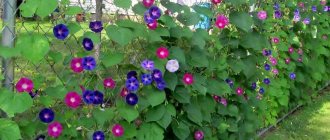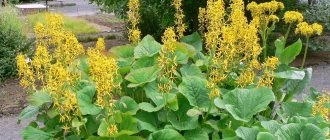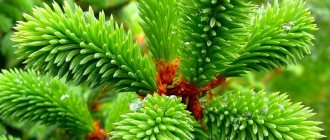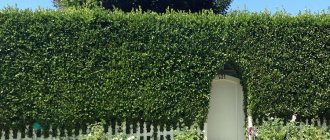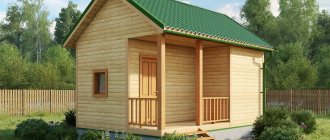Every owner of a country house strives to create a unique landscape on his territory. Evergreens, of which there are a huge number in nature, are a good help. In the warm season, they give people partial shade. After the rain, they fill the atmosphere with aroma. And when the flowers bloom, they serve as a rich green background. In late autumn, undying crops decorate the dull nature. And how beautiful they look among the fluffy snow! Let's consider the most popular specimens for landscape design.
Strawberry tree (Arbutus unedo)
It is a small, attractive tree with bell-shaped flowers and beautiful red fruit in the fall. As it grows, it often forms a remarkable multi-stemmed structure. Grows easily in medium, acidic, moist and well-drained soils. It is practically not susceptible to diseases and pests, but it is necessary to monitor the appearance of aphids or spots on the leaves.
Arizona cypress (Cupressus arizonica)
The tiny leaves look like scales and come in different shades of green on different varieties, including gray-green and blue-green.
The trees thrive in full sun and well-drained soil, as well as in hot, dry conditions. It grows at a moderate pace, adding from 30 to 60 cm per year and reaches a height of up to one and a half meters.
Cupressus arizonica requires a location that provides sufficient direct sunlight.
Can grow in acidic, neutral or alkaline soil. They tolerate clay, loam or sandy soils well, but they must be well drained. It will grow better if it is watered regularly, or better yet, irrigated.
Yew (Taxus)
Yews are coniferous trees, so instead of flowers they produce cones (along with red berries). They are characterized by evergreen needles and a wide range of sizes and shapes, as well as a fairly rapid growth rate that slows down as the plant matures. It is best to plant them in spring or fall.
Soil type and PH – well-drained loam of medium moisture, neutral.
Start small
The first and, perhaps, the most important technique that is used when creating flower beds without flowering plants is, of course, a game of contrast. Combinations of leaves of different sizes, textures, shapes and colors allow you to create real landscape paintings. However, not every novice gardener can achieve the desired effect using all these characteristics. Lack of experience can play a cruel joke on a beginner, so at first it is better to focus on using one or two techniques.
Spruce (Picea)
Spruce has about 35 species of the genus Picea. Typically tall and thin, conical or cylindrical in shape. They have dark green or blue-green needle-like foliage with cones that fall off after pollination.
They quickly grow to large sizes. Most spruce trees are easy to grow due to their tolerance to a wide range of growing conditions.
Easily adapt to various types of soil, including clay or sandy.
They tolerate drought well, but prefer evenly moist soil.
Spruce trees are preferable to grow in cooler climates. They can withstand warm summers, but cannot tolerate high humidity or extreme heat.
Douglas fir (Pseudotsuga menziesii)
This tall coniferous tree can reach a height of 120 cm to 90 meters, but there are smaller varieties available for the home landscape. As it grows, the Douglas fir takes on a pyramidal shape.
Douglas fir does not like hot and dry winds, but thrives in moist soil and humid climates. However, wherever you plant it, it should have full sun.
The ideal soil for this tree is acidic loam with drainage.
It is best not to trim a fir unless it needs to be trimmed from damaged, diseased or dead branches.
Evergreen shrubs enliven dull winter landscapes with their lush greenery. Some spring-blooming specimens produce colorful berries in the fall, making them attractive year-round.
Vertical gardening - from idea to implementation, choosing options according to budget and attractiveness (photo + video)- Vertical flower beds - basic principles and rules for choosing plants and arranging a suburban area with your own hands
Decorative grass - 140 photos of original design. Review of the best varieties of grass for the garden, instructions, reviews, videos + gardener recommendations
However, most of the evergreen shrubs featured here are prized for their resilient foliage and ability to bloom in cold climates, where the display of their winter greenery is most welcome.
What is an evergreen shrub?
It has the following features:
- less than 450 cm in height;
- several stems growing from the same point in the ground;
- responds well to pruning and care;
- has year-round foliage.
Plants and flowers for the silver flower garden
Many silvery species are decorative-leaved plants; their flowers are small and inconspicuous. When creating a flower garden composition, it is important to observe the following rules: in the background there are one or two tall sculptural bushes, as an accompaniment they are accompanied by medium-sized plants (various sage or wormwood), empty spaces are filled with ground cover plants (Byzantine chickweed or gray fescue).
The range of trees and shrubs in silver tones is quite large. Among the conifers, the favorites are various types and varieties of spruce: Canadian blue spruce, compact varieties of prickly spruce, reaching 1-1.5 m in height, conical spruce, etc. Pines also have forms with silvery needles: these are Weymouth pine, varieties of mountain pine and black.
The blue needles of the pea-bearing cypress variety “Bulevar” are spectacular; being quite frost-resistant, it requires careful protection from the spring and winter sun. But most of all blue and silver forms can be found among junipers: among the tall ones, these are virginiana and rocky; among the creeping ones, there are horizontal, recumbent, varieties of Cossack juniper; beautiful blue needles of Chinese juniper and scaly juniper.
Often, flower beds of annuals and other compositions are complemented by cineraria maritime with its carved blue leaves, which combine perfectly with red, yellow, and blue flowers. Of the large annuals, the Spanish artichoke and the round chinstrap are excellent. In the substitution culture, silver cumin, ragworts, rosemary, and cypress santolina are used.
Of the bulbous species, many species have bluish foliage: muscari, galanthus, onions (Christophe, Karatavsky, Aftalunsky), as well as liverworts, corydalis, columbine (most decorative in spring). Among the alpine ground cover plants there is also a wide variety of silvery forms: rock alyssum, some species of juveniles (for example, cobwebby juveniles), Bieberstein's jasper and tomentosa, alpine edelweiss, sedum (reflexed, Lydian, rocky), alpine aster, open lumbago, etc.
Medium-growing and tall-growing perennials also contribute to the silver palette. Very attractive are the woolly wormwood and the Byzantine wormwood with their pubescent leaves, types of wormwood (Artemisia Louis, wormwood, Schmidt's wormwood, Steller's wormwood), anaphalis, Lychnis crown with purple flowers, giant eryngium, some varieties of garden carnation, salvias (silver sage, salvia oakwood, sage), mountain and blue cornflowers, lavender varieties with soft lilac flowers and a charming aroma (requires a sunny place and shelter in winter), sedum, sword-shaped leaves of irises. Some hosta species and varieties have gray-blue foliage and will perfectly complement any flower garden: Hosta Zibodda and Hosta Fortune.
Leucothoe
It is a hardy and disease-resistant shrub that requires minimal special care.
The leaves have a leathery texture and their dark green color turns to shades of purple and bronze in the fall. Creamy white bell-shaped flowers add interest to this beautiful shrub, ideal for shady gardens.
The flowers are slightly fragrant, with a slight honey-like scent that attracts pollinators such as butterflies and bees, making this plant desirable and attractive in the garden landscape.
Overall, this evergreen has a pleasing array of seasonal garb, from young, bright green leaves in early spring to white flowers tinged with pink in late spring and early summer, to its autumn transition to deeper bronze and purple flowers.
Watering the site - types and types of systems, main differences and features, rules for selection and installation, as well as recommendations for operationOrnamental plants - 140 photo options. Review of the most popular plants with names and descriptions. Gardener's recommendations + reviews
Boxwood: planting, care, growing in open ground, propagation. Full description of the plant from A to Z. More than 100 photos of evergreen shrubs
Prefers medium, slightly acidic and well-drained soil.
Dwarf forms
Thanks to their compactness, beauty of flowering, and aroma, low shrubs, subshrubs and shrubs have earned the well-deserved respect of professionals and flower growers who want to make their garden unusual, modern, and stylish.
Lavender angustifolia
The essential oil crop from the Lamiaceae family is grown on an industrial scale, as well as in gardens around the world. Lavender propagates well by seeds. In regions with a mild climate, winter sowing is practiced.
Flower growers in the middle zone stratify the seeds for two months before planting on the bottom shelf of the refrigerator, and sow them for seedlings in February - March.
For lush flowering and maintenance of shape, annual pruning is carried out in the spring, shortening the shoots by a third
Ericaceae
Rock gardens and rocky gardens are often decorated with evergreen shrubs from the Heather family. If desired, you can create entire heather meadows from them, which will bloom from spring to autumn.
Common heather is available in a wide range of varieties (about 500), varying in height, foliage color and flower color.
Erica is a relative of heather, differing from it in the time of flowering, which begins in spring, and in its needle-shaped leaves. Heather blooms in late summer–autumn and has more scaly leaves.
White, pink, burgundy, blue, purple Erica “bells” retain their decorative effect for a long time after flowering
The lower tier of flower beds and alpine hills are a great place for common podbela . Its second name is andromeda. The plant is poisonous, so you need to work with it very carefully.
Pale pink, like porcelain jugs, drooping, white flowers are contrasted with dark bluish-green foliage
Cherry laurel (Prunus laurocerasus)
It is a wide, dense, spreading shrub that eventually reaches a height of up to 5 meters and a spread of up to seven meters.
It has shiny, oblong, dark green leaves - up to 15 cm in length. The foliage is evergreen, without autumn color. Tiny cupped creamy white flowers in vertical clusters (inflorescences up to 13 cm long) bloom from the leaf axils in April-May. The flowers have a powerful aroma. They give way to somewhat inconspicuous black drupes that ripen in midsummer. This fruit is mostly inedible for humans (bitter aftertaste), but is loved by local birds.
Pest resistance is better than most other species of the genus Prunus. Vulnerable to powdery mildew and root rot.
Azalea
Is there a more welcome sight in spring than a blooming azalea bush? These shade-loving plants can bring delightful color to every corner of the spring garden. Many species can grow up to 350 cm in height, with extraordinary beauty in spring.
The color range is impressive - from white to pale pink, from red to purple. Most azaleas bloom in mid-spring, but some bloom earlier or later than others, so it's easy to choose a variety for your design needs.
Azaleas like acidic soil. This explains why seedling pots typically use peat moss as a planting medium. The soil should also have good drainage and good fertility with plenty of organic matter (compost, shredded leaves, etc.). Azaleas do best with natural mulch, such as pine bark mulch.
They need water to bloom and spring rains usually alleviate this problem. However, if the spring is dry, additional watering may be beneficial.
Living fence - the best ideas on what to make a hedge from at your summer cottage. Many photos of ready-made options with exclusive designs + instructions- Trimming bushes - the basics of choosing the right plants and forming the right shapes, selecting tools (photo + video)
Landscaping a site - basic principles and rules for creating a beautiful site with your own hands
The winter hardiness of azaleas varies and therefore it is very important to carefully select the plant variety and its planting location.
If it is too cold, the buds may not form, and if it is too hot, the flowers may burn from excessive temperature exposure.
Mold can be detrimental to azaleas and, to ensure adequate air circulation, do not plant them too close to other large shrubs.
Japanese Pieris (Pieris japonica)
An ornamental shrub that is attractive all year round. In late summer, reddish buds appear for next year's blooms. During the winter months, these beady buds contrast with the evergreen, glossy foliage.
Pieris japonica is an early blooming flower; it blooms for about two weeks in late winter - early spring. The white or pink flowers resemble lily of the valley flowers, but without the strong scent.
Warning—the leaves, flowers, and by-products (honey) of this shrub are highly toxic to humans and pets. Like rhododendron, it contains serotoxins, which if ingested can be fatal. For this reason, Pieris japonica is not recommended if children are playing in the yard or pets are wandering around.
These shrubs prefer shady places where they will be protected from drying winds, and like to take root in acidic soil.
Well-draining soil is preferred to prevent dangerous fungal infections, and this species is susceptible to the same diseases as azaleas.
Fungal diseases mainly spread in humid weather. Therefore, proper spacing between bushes is critical for good air circulation and plant health. Shrubs should be placed at a distance of about 180-210 cm from each other, taking into account their size in adulthood.
Pieris japonica prefers full sun rather than partial shade. In warmer climates, it should be planted in a location where it is protected from the hot afternoon sun.
The soil should be rich in organic matter and moist but well-drained; This shrub does not grow well in wet soils.
Pieris japonica is an acid-loving plant that does not tolerate alkaline soils. Before planting, you should check the soil pH and add a special fertilizer for azaleas, camellias and rhododendrons that contains sulfur to raise the pH level.
In the absence of rain, the shrub needs regular deep watering about once a week. It is necessary to moisten the soil to a depth of 8 cm.
A layer of pine needle mulch about 5-8 cm thick helps retain moisture in the soil.
Bamboo
Bamboo is the ideal solution for those who want to add a touch of exoticism to their evergreen garden. Despite the fact that the climate of the middle zone is alien to this plant, bamboo takes root well and withstands moderate frosts.
In landscape design. Since bamboo began to appear in domestic gardens quite recently, a consensus about its place in landscape design has not yet formed. In my opinion, bamboo is best suited for forming small groves.
Care. As already mentioned, bamboo is one of the few exotic plants that takes root without problems in the conditions of central Russia and does not require special care. However, in winter it should still be covered.
Evergreen boxwood (Buxus sempervires)
The genus Buxus includes about 70 species of slow-growing, broad-leaved evergreens. Most garden forms are cultivars or hybrids of two species: B. sempervirens and B. microphylla.
Boxwoods are typically large shrubs or small trees, but most varieties used in modern landscaping are dwarf varieties such as B. Sempervirens 'Suffruticosa' and Buxus sinica var. Insularis.
Reaching a mature height of just 60cm, these dwarf boxwood shrubs are prized for their thick, light green leaves and round, compact shape when growing.
Boxwood is best planted in loamy soil in full sun or partial shade, preferably in an area better protected from the wind. Their roots are shallow, so the soil must be protected from heat.
There should be an 8cm thick layer of organic garden mulch around each plant. The mulch should be 5cm from the trunk and about 30cm outwards around the entire circumference if space allows. If this process is carried out close to a bush or tree, pests can be attracted.
Boxwood tolerates full sun to partial shade, but is preferably planted in dappled shade during the hottest part of the day. Covered by trees, dwarf boxwood roots will benefit from cooler soil temperatures.
Boxwood bushes require well-drained soil or they will suffer from root rot. Although they can tolerate soils with lower pH, a soil pH in the range of 6.8 to 7.5 is preferred.
For the first two years, boxwood requires weekly deep watering, otherwise the moisture will not reach the main root system. With deep watering every 2-4 weeks, mature plants will grow well.
In the spring, before new shoots appear, the bushes must be fertilized with universal fertilizer.
Trachycarpus
If you are a lover of exotic plants in the garden, then be sure to take a closer look at Trachycarpus. This is the only true palm tree that can take root in the conditions of central Russia.
In landscape design. Palm trees are quite a rare sight outside the southern regions, so they often look a little awkward. Nevertheless, you can find a place for such exotic things. Trachycarpus will best brighten up large areas of grass, and can also form some kind of composition. In any case, wherever you plant Trachycarpus, the most common question will be “What is this, a palm tree?”
Care. Trachycarpus is a plant that is quite resistant to cold and other adversities, which in most cases does not require special care. However, icy winds can destroy the palm tree. Therefore, in winter, Trachycarpus should definitely be protected from the wind. This plant does not require any other special care.
When is the best time to prune evergreen bushes?
As a rule, needle bushes are pruned in early spring - towards the end of the dormant period and before new shoots appear. Pruning plants at this time allows enough time for new shoots to appear and also allows them to get stronger until next winter.
But often broadleaf shrubs (and some needle-bearing varieties) require a different approach. For example, if they are flowering shrubs (that is, plants valued for their flowers), you will have to wait until after the flowering period to prune them. Otherwise, the more flower buds that are removed during the pruning process, the less pleasure will be obtained from the sight of flowering plants.
And what’s the point of growing such a bush if you can’t admire its flowers? In particular, pruning azaleas and rhododendrons after they have finished flowering makes much more sense than pre-pruning them.
Erika
Flower lovers should definitely take a closer look at Erica. This beautiful plant looks like a small bush, the height of which rarely exceeds 20-25 cm, and during flowering Erica is filled with a huge number of small buds.
In landscape design. The main feature of Erica is the huge number of varieties that can be chosen based on the month of flowering and the desired shade of flowers. Most often, Erica is used to decorate flower beds.
Care. Caring for it varies greatly depending on the type. For example, Erica ruddy is tolerant of lime, while Erica ashen is completely unsuited to it. Therefore, care for this plant should be selected, primarily based on the selected species.
